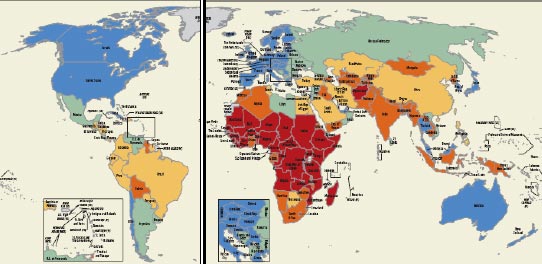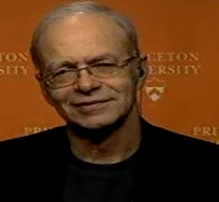USAID and NGO transparency: When in doubt, hide the data
by Till Bruckner, PhD candidate at the University of Bristol and former Transparency International Georgia aid monitoring coordinator In my last blog post on this website, I claimed that some NGOs had instructed USAID to hide part or all of their project budgets in a FOIA response, and praised others for their openness. Aid Watch subsequently contacted all NGOs mentioned in the piece for comments.
In its response, World Vision denied ever having asked USAID to withhold budgetary information:
World Vision has checked thoroughly with all of its relevant offices and found no record of having received notification of this FOIA request by USAID or any evidence that WV asked USAID to redact information in the documents requested of USAID by Bruckner. After contacting USAID officials, we learned that the redaction was made independently by the USAID FOIA office, not at the request of WV.
Referring to a letter from the donor agency, World Vision correctly pointed out that in the letter, “USAID did not state or imply that World Vision asked that this information be withheld.”
Why had I pointed the finger at World Vision, rather than at USAID? Half a year after filing my FOIA, I had received an email from USAID stating that:
From the nature of your request, we anticipate the need to send a “submitter notification” to the companies awarded the contracts. We notify them that we received a FOIA request for their proposals. We will afford them an opportunity to provide their arguments concerning the release or withholding of the proposal. We will contact you when we send out the notifications.
USAID never did contact me again on this matter. When it finally provided the budgets a further eight months down the line, the type and amount of information withheld varied dramatically from one budget to the next, suggesting that the response was not the result of a process centrally managed by USAID in isolation.
Asked to clarify these apparent inconsistencies, USAID confirmed in an email that:
Yes, we did receive differing responses from the submitters. As these were grants, we had to obtain the submitters’ recommendations. Section 1 of Executive Order 12600 requires that we give submitters of confidential commercial information the opportunity to address how the disclosure of their information could reasonably be expected to cause substantial competitive harm.
This is astounding. USAID claims that it contacted its grantees, and now one of the NGOs insists that it was never contacted by its donor. Did USAID fail to contact some or all of its contractors, possibly breaching the law in the process? Did USAID go ahead and black out World Vision’s budgets on its own initiative?
Of the eight NGOs contacted by Aid Watch, only World Vision and CNFA have responded so far. CNFA’s response confirms that it regards its detailed project budgets as confidential proprietary information whose release might cause it competitive harm. However, CNFA declined to comment on a follow-up question which asked specifically whether it had been contacted by USAID, leaving open the possibility that USAID may have acted in line with its grantee’s interests without consulting CNFA in the process.
Did UMCOR, Mercy Corps and AIHA really agree to release their full project budgets in the Republic of Georgia, as I had assumed, or did USAID just throw open their books without consulting them? Did Save the Children and CARE truly instruct USAID to withhold select pieces of budgetary information? Did I mistakenly malign Counterpart International for opacity when the real culprit was USAID? Who received submitter notifications, and who did not?
Yesterday, Aid Watch asked USAID to confirm that they had indeed contacted each NGO. They replied the same day with this statement:
As a matter of standard operating procedure, USAID notified in writing all the organizations whose budgets were sought under the FOIA request. When we did not receive a response from some of the organizations, the FOIA office followed the regular process regarding redactions. USAID redacts trade, commercial, financial, and personally identifying information in order to protect USAID's and external organizations' business and personal data.
For more information, please see http://www.usaid.gov/about/foia/foireg.htm
So the default position is non-disclosure: USAID is legally bound to contact each NGO, but if USAID’s message gets lost, or if the NGO decides not to respond for any reason, then USAID redacts their data for them. Incentives are thus set up for aid agencies NOT to respond, and for USAID NOT to disclose.
I have begun to doubt that we will hear back from any of the other NGOs that Aid Watch has emailed. What incentives are there for NGOs to take part in an open dialogue, when their own funder sets such low standards for transparency and accountability?
--
Related posts:
The accidental NGO and USAID transparency test Till Bruckner Responds to Critics on Meaningful Transparency NGO Response: CNFA Reaffirms Commitment to Transparency World Vision responds on transparency
 From Aid to Equality
From Aid to Equality






 Today, the New York Times-sponsored Bloggingheads.TV put up a 45 minute video discussion {video link:
Today, the New York Times-sponsored Bloggingheads.TV put up a 45 minute video discussion {video link: 